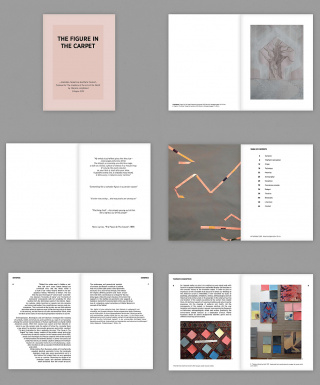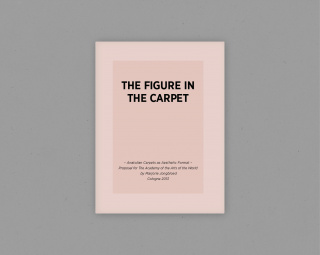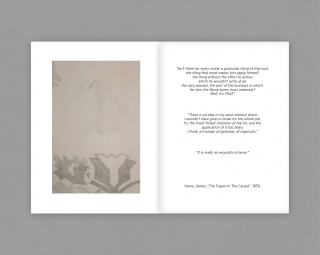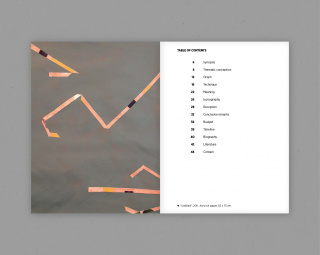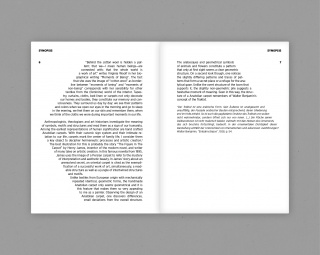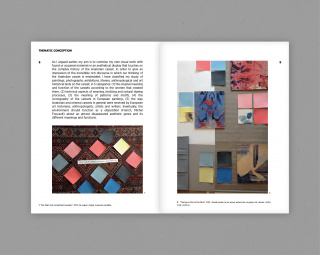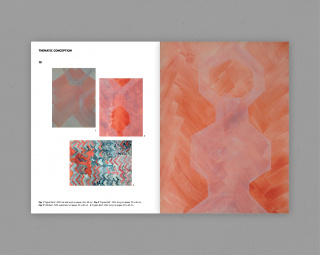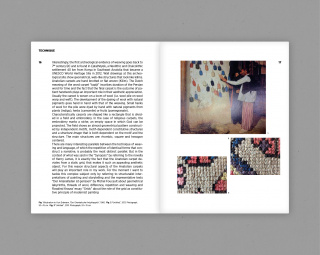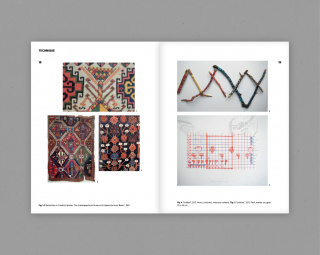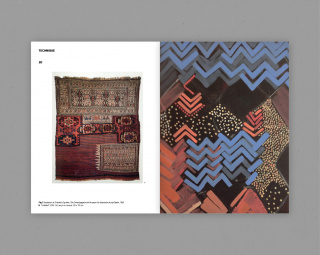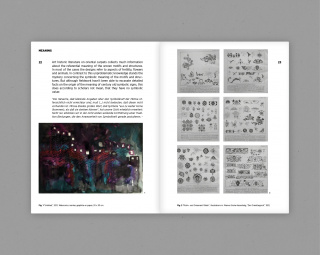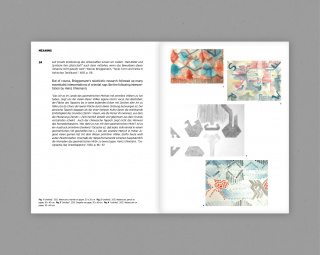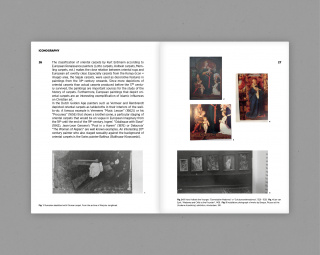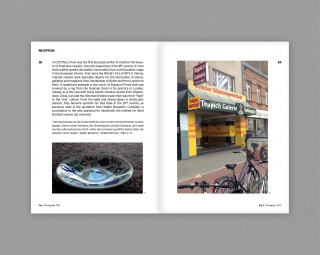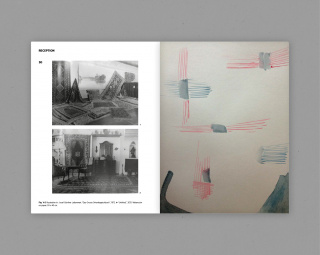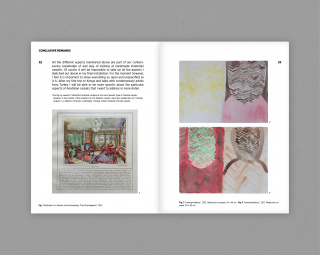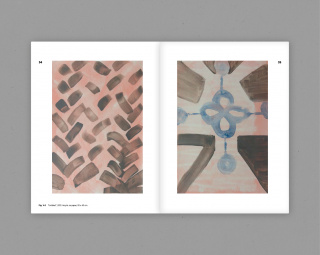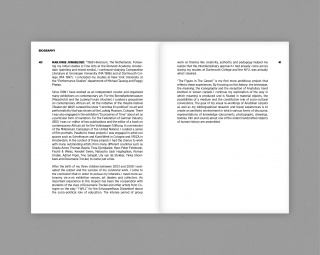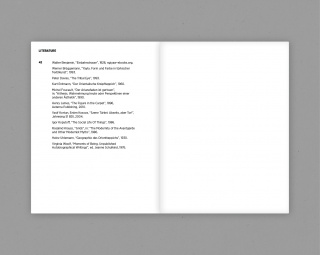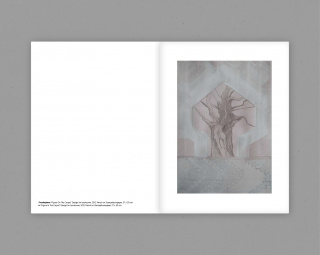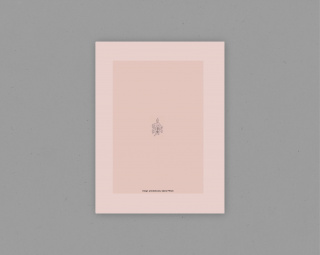THE FIGURE IN THE CARPET
.............................................................
In Henry James’ Kurzgeschichte „The Figure in the Carpet“ (1859) wird Ästhetik symbolisiert durch einen orientalischen Teppich. Nicht ein Ölgemälde oder eine Marmorskulptur repräsentiert für James ein gelungenes Kunstwerk, sondern ein Einrichtungsgegenstand der nicht-europäischen Kultur. Die jahrhundertalte Webkunst, ein typisches Handwerk der Frau, steht Modell für einen raffinierten Umgang mit Symmetrie und Geometrie, Norm und Abweichung, Identität und Differenz. In zahllosen Gouachen habe ich diese Genealogie und formale Beschaffenheit von Teppichen ausgelotet. Ich habe Kunsttheorien des 19. Jahrhunderts von vor allem Alois Riegl studiert und mich mit der Ikonografie der Teppiche in der europäischen Malerei insbesondere bei Vermeer und den sogenannten Lotto-Teppichen auseinandergesetzt.
In the short story “The Figure in the Carpet“ (1859) by Henry James, aesthetics are symbolized by an oriental carpet. According to James, neither an oil painting nor a marble sculpture could represent an ideal work of art, but instead a furnishing object of non-western origin. The traditional art of weaving - a typically feminine craft – represents a refined handling of symmetry and geometry, norm and deviation, identity and difference. In countless gouaches, I explored the possibilities of the genealogy and formal characteristics of oriental carpets. I studied art theories of the 19th century, above all the writings by Alois Riegl and the iconography of carpets in European art history, for example in Vermeer’s art and in the so-called Lotto-carpets.

